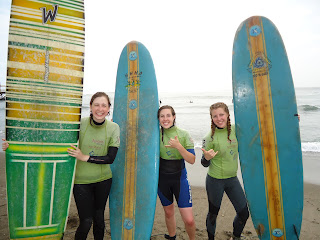 Being in a foreign
country is exhilarating. I loved my experience but there were times when I got
a little bit homesick. Seeing international brands, ads, and companies was
comforting and it made me feel like I had a little bit of home with me.
International marketing was abundant and I was interested in seeing the
differences. South America offered the options of Burger King, Cinemark, OfiShop
(Office Depot), Chili’s, T.G.I. Friday’s, McDonalds, Pepsi, and Coca-Cola.
Being in a foreign
country is exhilarating. I loved my experience but there were times when I got
a little bit homesick. Seeing international brands, ads, and companies was
comforting and it made me feel like I had a little bit of home with me.
International marketing was abundant and I was interested in seeing the
differences. South America offered the options of Burger King, Cinemark, OfiShop
(Office Depot), Chili’s, T.G.I. Friday’s, McDonalds, Pepsi, and Coca-Cola.  There were billboards
for McDonalds, Pepsi, and Coca-Cola. Surprisingly, there was a lot of
advertising for the movie The Lorax.
Even in the outskirts of Trujillo they had posters on poles. There was also a
store that was selling juice boxes that contained images and advertisements for
the movie. I also stumbled upon ads for cologne with Justin Timberlake and
makeup ads with Emma Watson.
There were billboards
for McDonalds, Pepsi, and Coca-Cola. Surprisingly, there was a lot of
advertising for the movie The Lorax.
Even in the outskirts of Trujillo they had posters on poles. There was also a
store that was selling juice boxes that contained images and advertisements for
the movie. I also stumbled upon ads for cologne with Justin Timberlake and
makeup ads with Emma Watson.  McDonalds is huge
anywhere you go. I typically don’t eat there, ever. However, on the trip I ended
up eating there five different times because of time and convenience and
because there was nothing else decent in the airport. I did notice that out of
the five times I ate there I only saw a dollar menu one time. They also have a
smaller menu.
McDonalds is huge
anywhere you go. I typically don’t eat there, ever. However, on the trip I ended
up eating there five different times because of time and convenience and
because there was nothing else decent in the airport. I did notice that out of
the five times I ate there I only saw a dollar menu one time. They also have a
smaller menu. 

Peru had t-shirts that were similar to the brands of Puma or Adidas but they were altered to incorporate something from the country.
 One of the most
interesting things that I saw was on a package of cigarettes. While in a shop I
saw that the cigarette packages had pictures on them that warned the buyer that
the cigarettes will create various forms of cancer. While mildly disturbing, I
found the idea ingenious. I hope that maybe the U.S. will incorporate the idea
and help prevent the results of smoking.
One of the most
interesting things that I saw was on a package of cigarettes. While in a shop I
saw that the cigarette packages had pictures on them that warned the buyer that
the cigarettes will create various forms of cancer. While mildly disturbing, I
found the idea ingenious. I hope that maybe the U.S. will incorporate the idea
and help prevent the results of smoking. 














